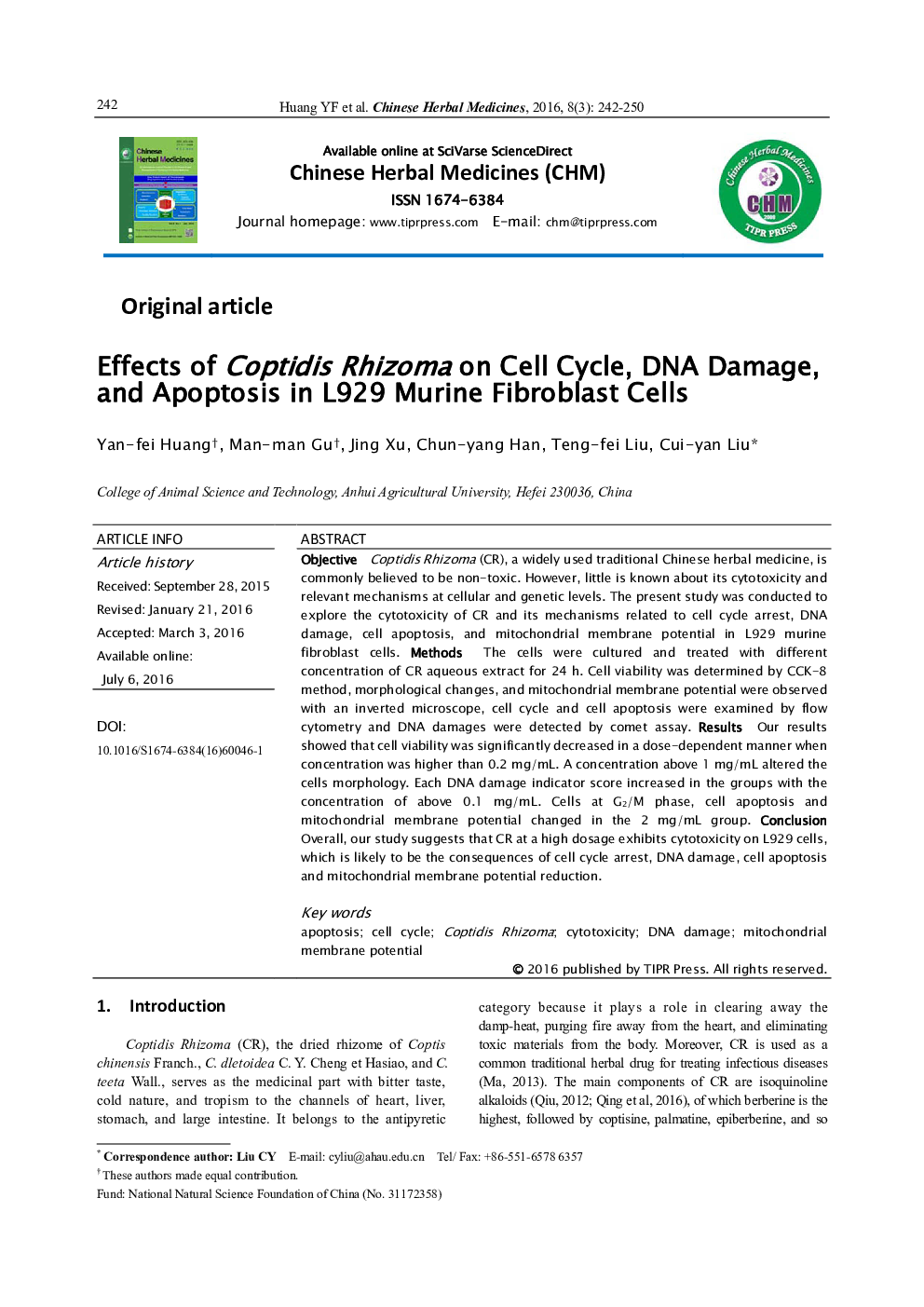| Article ID | Journal | Published Year | Pages | File Type |
|---|---|---|---|---|
| 3097843 | Chinese Herbal Medicines | 2016 | 9 Pages |
ObjectiveCoptidis Rhizoma (CR), a widely used traditional Chinese herbal medicine, is commonly believed to be non-toxic. However, little is known about its cytotoxicity and relevant mechanisms at cellular and genetic levels. The present study was conducted to explore the cytotoxicity of CR and its mechanisms related to cell cycle arrest, DNA damage, cell apoptosis, and mitochondrial membrane potential in L929 murine fibroblast cells.MethodsThe cells were cultured and treated with different concentration of CR aqueous extract for 24 h. Cell viability was determined by CCK-8 method, morphological changes, and mitochondrial membrane potential were observed with an inverted microscope, cell cycle and cell apoptosis were examined by flow cytometry and DNA damages were detected by comet assay.ResultsOur results showed that cell viability was significantly decreased in a dose-dependent manner when concentration was higher than 0.2 mg/mL. A concentration above 1 mg/mL altered the cells morphology. Each DNA damage indicator score increased in the groups with the concentration of above 0.1 mg/mL. Cells at G2/M phase, cell apoptosis and mitochondrial membrane potential changed in the 2 mg/mL group.ConclusionOverall, our study suggests that CR at a high dosage exhibits cytotoxicity on L929 cells, which is likely to be the consequences of cell cycle arrest, DNA damage, cell apoptosis and mitochondrial membrane potential reduction.
